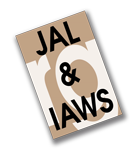Society of feral horses: Focusing on the Garranos in Serra d’Arga, Portugal. (RI §421781)

Grupo social de caballos ferales: centrando la atención en los Garranos de Serra d´Arga, Portugal -
Satoshi Hirata, Monamie Ringhofer, Sota Inoue, Tamao Maeda, Sakiho Ochi y Shinya Yamamoto
Por todo el mundo hay caballos viviendo en estado salvaje. Estos caballos normalmente forman grupos denominados “harenes”, que consisten en un macho y varias yeguas. En cada grupo hay entre 4 y 10 individuos de media. También un grupo de “solteros” consistentes en machos mientras no son capaces de crear sus propios “harenes.” Examinando los grupos sociales de caballos podemos explorar determinadas claves sobre el origen de los grupos sociales de animales, incluidos los humanos.
I. THE SOCIETY OF EQUIDS. II.SINGLE-MALE GROUP AND MULTI-MALE GROUP. III. HORSES’ SOCIETY AND HYPOTHESES IN PRIMATES. IV. RELATIONSHIPS BETWEEN INDIVIDUALS IN THE GROUP. V. MULTILEVEL STRUCTURE IN SOCIETY AND FUTURE PERSPECTIVE. BIBLIOGRAPHY. GLOSSARY.
Around the world, there are horses living in the wild. Such horses mainly form a harem group consist with one-male and multiple-females. In one harem group, there are 4 to 10 individuals in average. There is also a bachelor group of males who cannot create their own harem groups. By examining equine social groups, we can find the key to exploring the origin of animal society, including humans.
